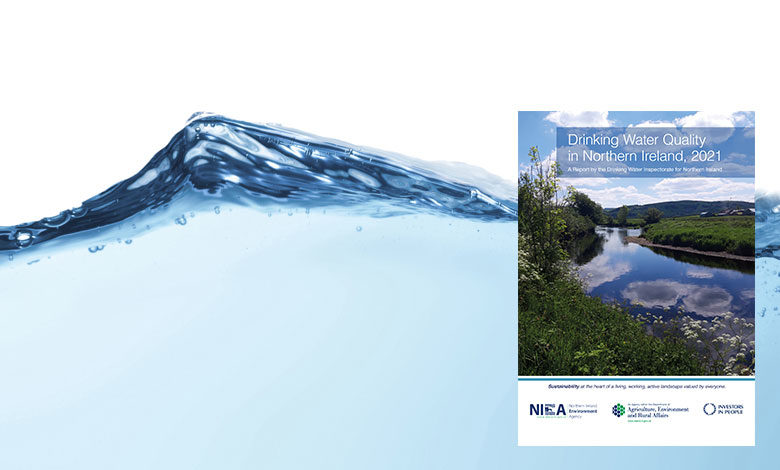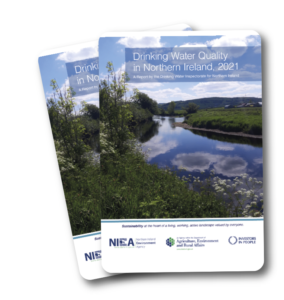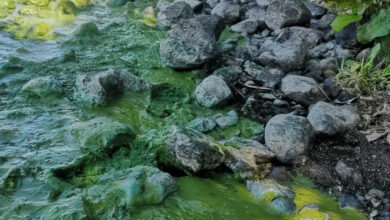Drinking water quality remains high

The Drinking Water Inspectorate’s (DWI) annual water quality report has found that the overall compliance for the mains water supply in 2021 was high, at 99.88 per cent.
The report acknowledges that the comparisions between 2021 and 2020 may be somewhat skewed due to the inability of the Northern Ireland Environment Agency (NIEA) to conduct the scheduled amount of tests, due to the impact of Covid-19, which resulted in less than 30 per cent of the intended sites being adequately tested in 2020.
It further outlines that there was a 99.92 per cent overall micro compliance, as well as a 99.82 per cent consumer tap compliance.
“Although this is a lower overall compliance than last year (99.94 per cent), the figure for 2020 was higher than anticipated due to the changes in the sampling programme because of the Covid-19 pandemic,” the report states.
Former Minister for Agriculture, Environment and Rural Affairs, Edwin Poots MLA said: “I am pleased to welcome the Drinking Water Inspectorate’s annual report on drinking water quality in Northern Ireland. The quality of our drinking water remains high which is vital for Public health, the hospitality sector, farming, and the economy.
“The Drinking Water Inspectorate has an important role to play in providing the Northern Ireland public with independent assurance that their water supply is safe and clean. Through regulatory enforcement, DWI has helped bring about improvements to Northern Ireland Water’s infrastructure for the benefit of us all.”
Lead
There was a notable increase in instances of lead in water, with the lead compliance having reduced by 2 per cent.
The lead compliance was 98.08 per cent compared to full compliance in 2020. However, less than 30 per cent of the scheduled lead samples were taken in 2020 due to the Covid-19 pandemic, as these samples must be taken at consumer taps.
The report says that “compliance with the lead standard is still an issue in properties built before 1970” so it is important that Northern Ireland Water continues to implement its lead strategy to effectively manage the risk to public health.
When a sample has contravened the standard and Northern Ireland Water’s lead leaflet investigation finds the property’s service pipe contains lead, it notifies the consumer. It is the owner’s decision whether or not to replace their supply pipe and any other lead pipes within the property.
The regulations require Northern Ireland Water to treat the water to reduce the risk of the concentration of lead being greater than 10 µg/l. Northern Ireland Water has a lead strategy in place to deliver improved compliance for lead.
Looking at the overall trend in lead compliance, there has been a gradual trend upwards since 2017. Notwithstanding the increased compliance, potentially due to reduced sampling in 2020, the decrease experienced in 2021 indicates that a significant amount of work is still required to ensure compliance improves in the future.
Water quality contacts
The report states that Northern Ireland Water received 7,305 complaints over the quality of water in Northern Ireland, a 21 per cent increase on the 2020 figures, although this is partially due to the skewed figures due to the context around Covid-19.
The most common complaint was to do with the colour of the water, accounting for 3,220 of the contacts received.
The report explains this, stating: “In 2021, as in every year, the majority of appearance concerns (68 per cent) related to discoloured water. The most common cause of discoloured water concerns is an orange, brown or black discolouration caused by suspended particles of iron (orange/brown) and manganese (black).
“Iron discolouration may occur through natural iron present in the raw water passing through inadequate treatment, from the treatment process, or from corrosion of cast-iron distribution mains. Manganese is naturally present in some raw waters and may not be fully removed if treatment is inadequate.”
It further states that white water, caused by a mixture of burst pipes, faulty water mains, or the release of chalk, accounted for over 30 per cent of the contacts received.
18.2 per cent of the complaints received by Northern Ireland Water were related to the taste of running water, a figure similar to the 18.9 per cent recorded in 2020.
“All water sources contain naturally occurring minerals. Water also contains dissolved gases, such as oxygen and carbon dioxide, which give tap water a characteristic taste. One substance, which is added to drinking water for disinfection, is chlorine, and this can give rise to consumer complaints,” the report states.
It further states that “other taste and odours should not be present in drinking water for aesthetic reasons such as TCP or earthy/musty, or for health reasons such as pollution from petrol and diesel”.






